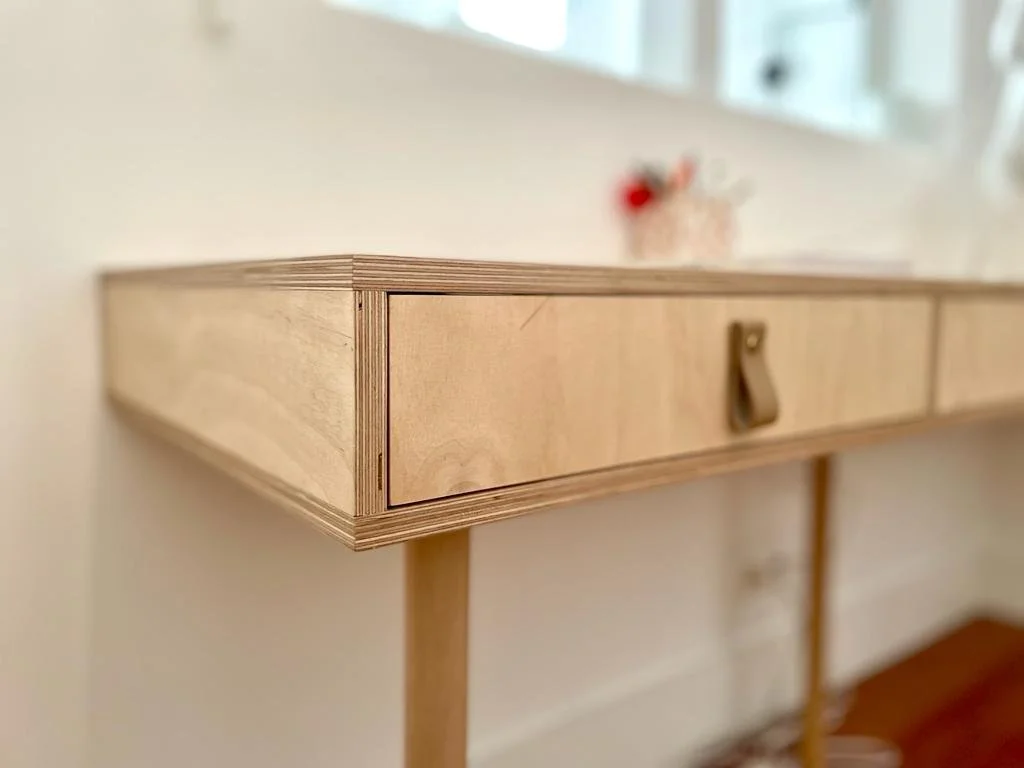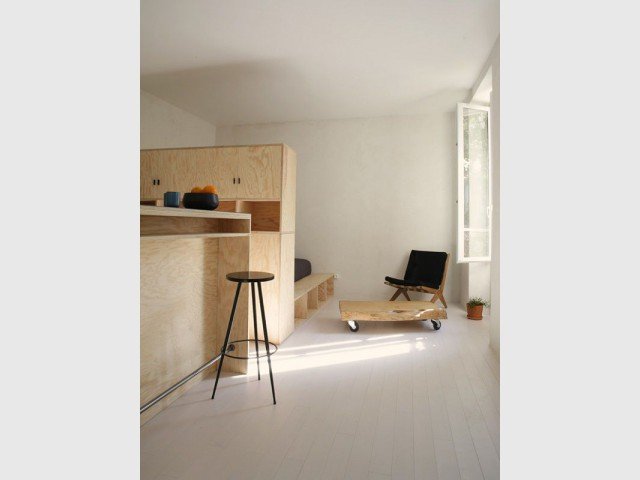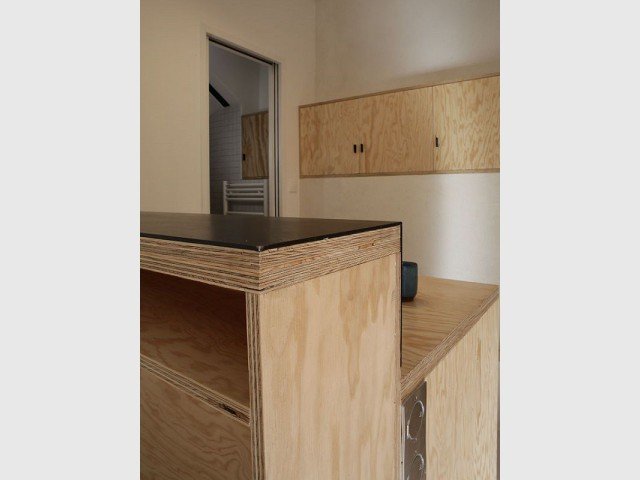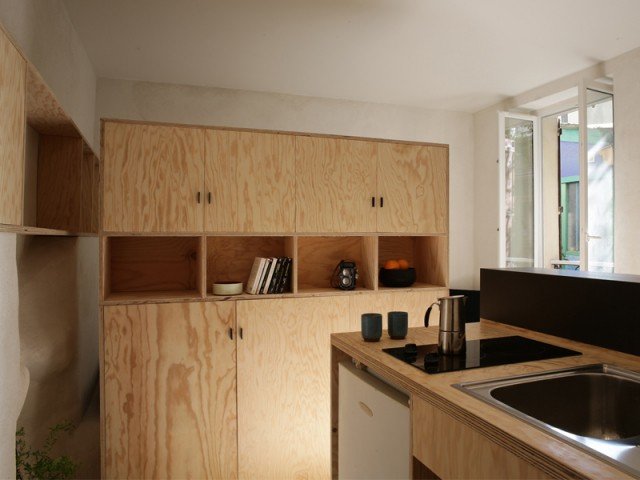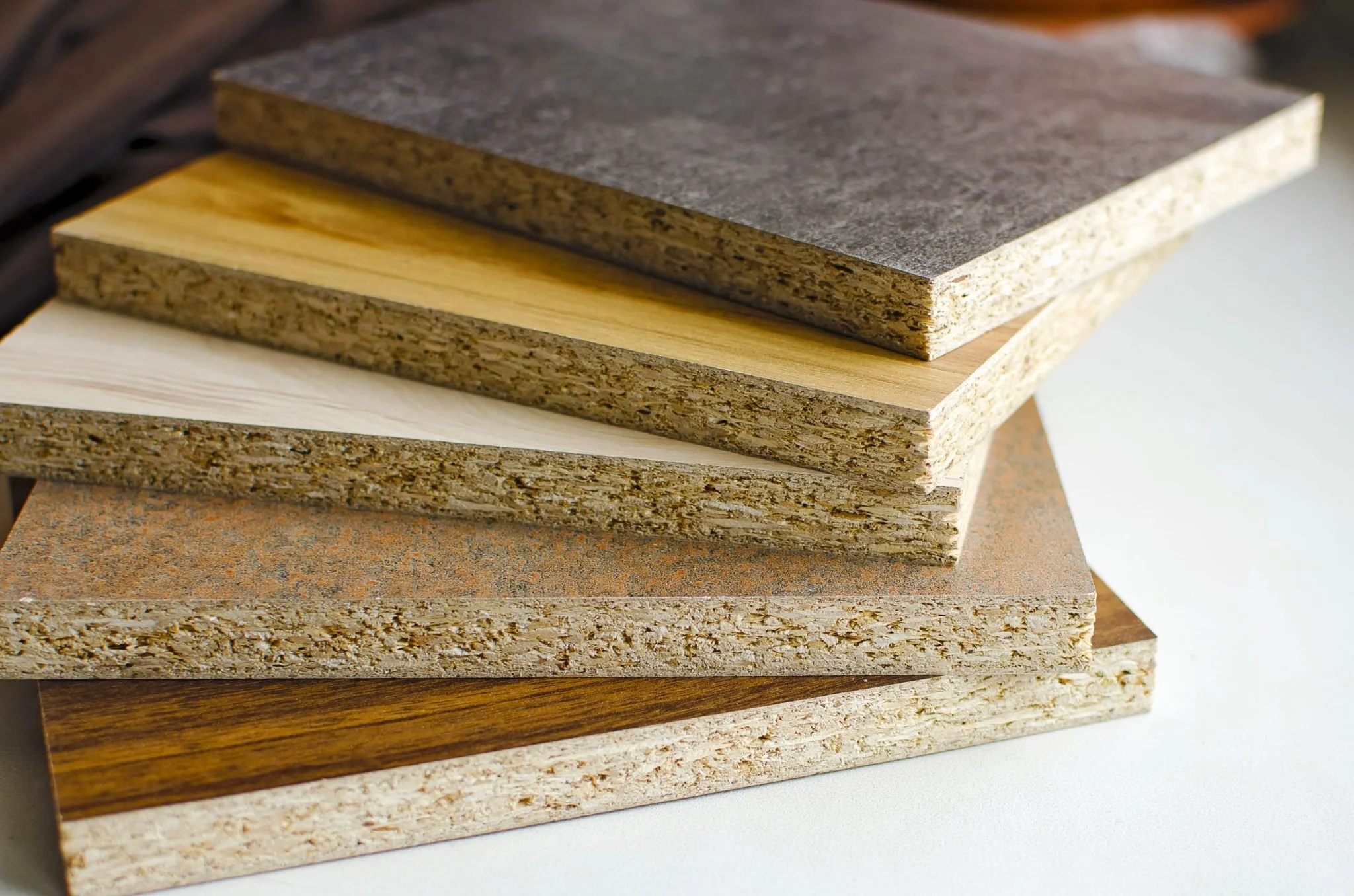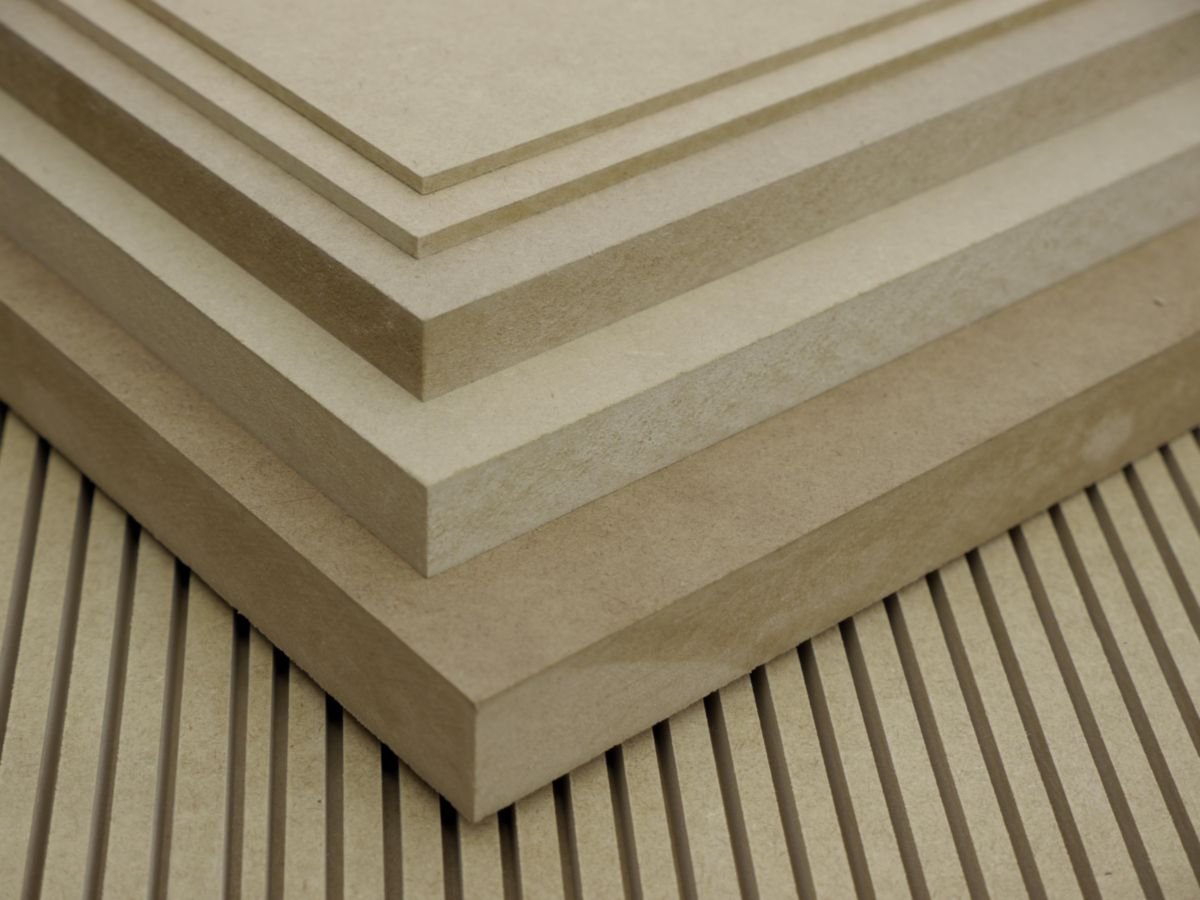Solid Wood, Plywood, and Other Alternatives…
Today, wood plays an important role in our interiors. This material, which is as sturdy as it is attractive, has won us over and is now more prominent than ever, especially since environmental issues are at the forefront of our minds. But with solid wood, plywood, melamine, MDF, and so many other options available, how do you choose? Don't worry, today we'll explain EVERYTHING!
All about solid wood :
Solid wood furniture is a safe and sustainable investment! It is raw wood, meaning that it has been extracted from the tree and transformed into planks without undergoing any modification or gluing. It is used in its natural state. This makes it a noble and environmentally friendly wood. This is what makes it the most expensive type of wood. While the price of solid wood furniture may sometimes seem rather high, it is nevertheless a long-term investment. Solid wood gives furniture a high quality that allows it to last over time.
Choosing solid wood guarantees that your furniture will have a very long life. It is a good way to prioritize elegance without compromising on quality. However, it is important to note that it requires maintenance (varnishing, cleaning, etc.), but if well cared for, it will last a very long time.
Solid wood species:
Solid wood furniture will easily blend into your interior, whether you prefer it unfinished or painted. It will adapt very easily to your interior, whatever your flooring, walls, or chosen decor style. Given the diversity available, you will have no trouble finding the perfect shade for your interior. There are many types of solid wood, such as oak, teak, pine, walnut, cherry, and mango wood.
Here is a quick reminder of the characteristics of the wood species most commonly used in the design of solid wood furniture:
Crédits : leblogdecodemlc.com
Oak: this is a medium-hard, fairly classic wood that offers a simple and timeless result. It is solid and widely used in France. Considered a classic wood, it is appreciated for its high water resistance and varied grain patterns.
Crédits : Saltandwillow.com
Walnut: this is also a medium-hard wood, but this time with a brown color. Its grain is more pronounced than oak and is highly prized for furniture making.
Crédits : côté maison
Beech: this is a medium-hard wood with light colors (white, light brown, or even slightly pink) that is perfect for Scandinavian decor. It is the least expensive wood in Switzerland and is widely used in the manufacture of chairs and in the kitchen sector.
Ash: Also widely used in furniture making, ash is a strong and elastic material. It has a similar color to oak but with a much more subtle grain, ideal for those who prefer a smooth wood.
Crédits : esthetecurator.com
These four examples represent only a tiny fraction of all the wood species that can be used in the design of custom-made wooden furniture.
What finishes?
Finishing is an essential step! In addition to protecting the wood—remember that wood is a living material that continues to evolve over time, with exposure to light, humidity, impact, etc.—it also enhances the beauty of the wood by highlighting its color and characteristics, such as its grain. There are different types of finishes: waxed, varnished, and lacquered. Each has its own specific characteristics. If you would like to know more about this, we invite you to read the article on finishes, which you can find on our blog!
Studio Bisson’s advice:
If you choose solid wood for your furniture, here are a few tips that you will certainly find useful.
1 – First of all, keep in mind that it can be difficult to make certain pieces of furniture out of solid wood, so your choice will also depend on your project. Wood is a heavy material that is not suitable for all types of furniture.
2 – Wood requires proper maintenance to be well preserved (again, you will find our tips in the article on finishes).
3 – While mixing different types of wood can add character to your interior, we recommend avoiding mixing too many types in order to maintain a harmonious atmosphere
Alternatives to solid wood:
Marine Plywood:
Plywood is a panel made up of thin sheets of wood (also called plies or veneers). It is lightweight and strong. Being less expensive than solid wood, it is a very attractive and widely used alternative. It is known for being attractive and easy to work with. Its thickness generally varies between 3 and 40 mm.
For information, plywood was first used in ancient times, but its first industrial production dates back to the second half of the 19th century, and it became popular in France during the First World War.
Marine plywood is distinguished by the way in which the veneers that compose it are arranged. The veneers are always odd in number and are superimposed so that the grains cross symmetrically on either side of the middle veneer, which is always thicker than the others.
The most commonly used species for marine plywood are poplar and maritime pine (widely used in construction), but it is also common to find plywood made from beech, chestnut, cherry, okoumé, or birch. In terms of composition, plywood can be made from a single wood species or several alternating wood species.
What makes plywood so successful today are its incredible properties: it is flexible, uniform, fire and water resistant, and has excellent mechanical performance. Other factors may also explain its popularity: its wide variety of finishes and its environmental friendliness. Plywood is generally made from wood sourced from sustainably managed forests, and its energy consumption in terms of production is relatively low compared to other building materials. As you can see, plywood is a reliable, durable and environmentally friendly material, and at Studio Bisson we embrace it without hesitation! In terms of maintenance, it can be cleaned daily with soapy water, and a degreasing cleaner can be used to remove stains. To nourish and protect plywood, we also recommend applying linseed oil from time to time.
To tell you a little more about the use of plywood in custom-made wooden fittings, we'd like to share with you this magnificent project by architect Pierre Gourvennec, which caught our attention! With a limited budget for a complete renovation, Pierre Gourvennec, accompanied by Léopold Mazoyer, took on the challenge of transforming this Parisian studio.
Crédits : Studio égoïne © François Leguen
Glued laminated timber
Glued laminated timber is a suitable alternative for those with a limited budget for their project. It has the appearance of raw wood and consists of several parallel wooden slats glued together. It is a very easy material to work with, but its main disadvantage is that it reacts poorly to moisture and may warp. To prevent this, it can be varnished.
Crédits : Ducerf.com
Crédits : Safraagencement.fr
Melamine :
Melamine-coated wood panels, unlike other types, are much more fragile. They are made from wood and a sheet of paper. They are often used in the manufacture of flat-pack furniture because they are very inexpensive. However, they do not last very long and are more suited to mass-produced furniture, which is designed to become obsolete.
Furthermore, it is very rare for our Portuguese cabinetmakers to opt for this solution because it is rarely used in Portugal, so it is not worthwhile for our craftsmen to purchase it, and ultimately it represents an unattractive cost for the furniture buyer. Therefore, for our furniture, we tend to favor plywood or MDF.
MDF:
Medium density fiberboard (MDF) is another interesting alternative. It is a type of smooth-looking wood composite. Also known as MDF, it is made from wood fibers bonded with synthetic resins and pressed at high temperatures. It is durable and can be varnished, painted, or stained. Along with solid wood, it is one of the heaviest types of wood. It has the advantage of having smooth, attractive surfaces, which makes it easy to paint, varnish, screw into, and cut. However, it does have one drawback: it tends to swell when it comes into contact with water and absorb certain types of paint.
Source : Céragrès / Famitalia
Crédits : dispano.fr
Making the right choice between solid wood, plywood, MDF, or melamine:
Now that we have introduced the different types of wood, here are a few things to consider that should help you make your choice:
Usage :
To choose the type of wood you are going to use, you need to consider what the furniture will be used for. First, you need to decide whether it will be used indoors or outdoors in order to choose a type of wood or wood panel that will be resistant to water and humidity, for example. Next, consider how often the furniture will be used, as whether it will be used daily or occasionally is an important factor to take into account. If the furniture is intended for daily use, it will be more susceptible to knocks and wear and tear than if it is used occasionally, in which case you will need to choose a more solid and durable material. To help you determine which panel is best suited to your project based on how you intend to use it, there is a classification system for wood panels that takes into account factors such as quality and moisture resistance.
The quality class consists of classifying panels from A to D according to their quality.
A is a panel with a clean surface without repairs, with a uniform color and sanded finish.
B corresponds to a panel with a smooth surface and repaired knots.
C is equivalent to a panel with a sanded surface and larger repaired knots.
D corresponds to a panel with a sanded surface, unrepaired knots, and potential slight cracks.
The moisture resistance class classifies panels according to their resistance to moisture without water-repellent treatment.
Class 1: Indoor use, humidity level below 20%
Class 2: Outdoor use under cover, humidity level sometimes above 20%
Class 3: Outdoor use, humidity level regularly above 20%
Class 4: Outdoor use, humidity level constantly above 20%
Class 5: Outdoor use, permanent contact with water
Budget :
The estimated cost of the project obviously raises the question of which materials to choose. Solid wood is the densest and most expensive option, while plywood is a less expensive and slightly less durable alternative. Next comes MDF, followed by melamine, which is very affordable but has a limited lifespan. To help you make your choice, you should also consider the strength and aesthetic appeal of the furniture, as well as the amount of cutting and drilling required.
As you can see, whether you opt for solid wood, plywood, or MDF furniture, wood is your best ally. It suits all budgets and styles and, above all, it is a durable, eco-friendly, and attractive material. We hope we have answered your questions and guided you in your choice.







